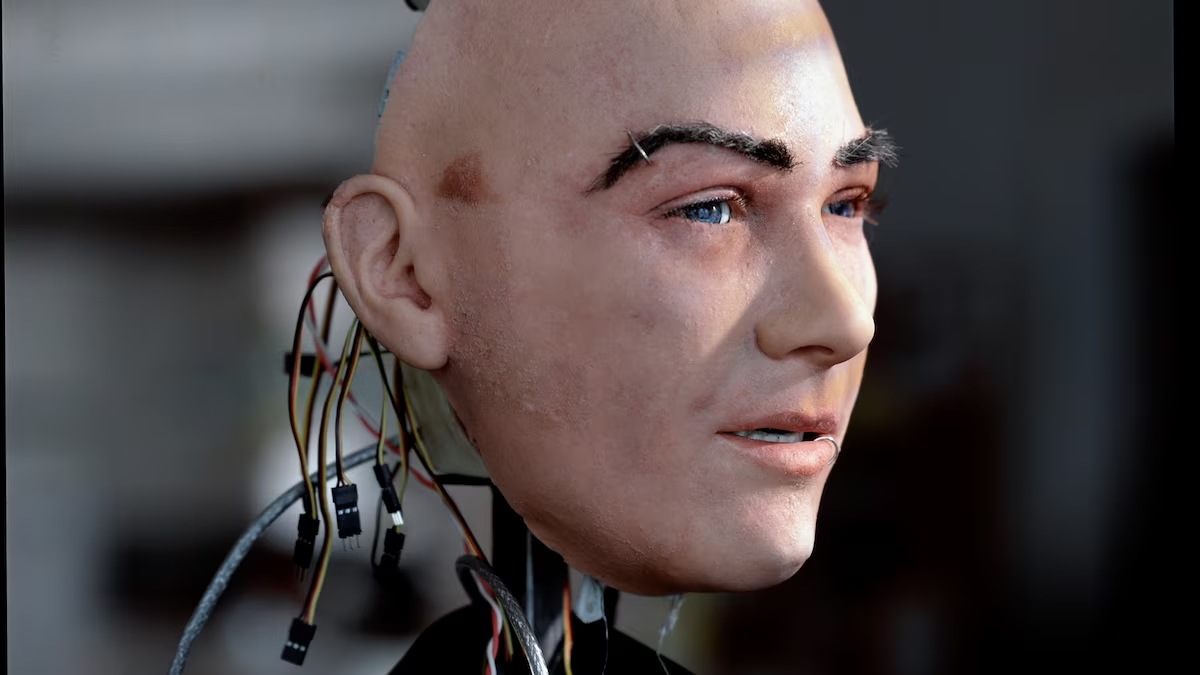Science fiction has long imagined robots with startlingly human-like features, blurring the lines between machine and mankind. Now, a team of Japanese researchers has taken a significant stride towards making this vision a reality. In a groundbreaking study published in Cell Reports Physical Science, scientists have successfully grown living skin cells onto a robotic face, enabling it to display a lifelike smile. This development not only pushes the boundaries of robotics but also raises intriguing questions about the future of human-machine interaction.
The Science Behind Skin-Covered Robots
Led by Professor Shoji Takeuchi from the University of Tokyo, the research team set out to address a long-standing challenge in robotics: creating more lifelike and expressive robotic faces. Traditional approaches using rigid materials and mechanical actuators often result in an unnatural appearance, triggering what’s known as the “uncanny valley” effect – a sense of unease or revulsion in humans when confronted with robots that appear almost, but not quite, human.
To overcome this hurdle, Professor Takeuchi’s team employed a novel approach:
- Cell Cultivation: Human skin cells were cultured in a laboratory setting.
- 3D-Printed Base: A specially designed base was created using 3D printing technology.
- Microstructure Integration: The base incorporated microscopic v-shaped cavities, serving as anchors for the skin.
- Dermal Replication: A replica of the human dermis was included, providing necessary elasticity and strength.
This innovative method allowed the team to create a skin covering capable of stretching and contracting, mimicking the natural movements of human facial muscles during expressions like smiling.

Potential Applications: Beyond the Smile
While a smiling robot face might seem like a novelty, the implications of this research extend far beyond creating more aesthetically pleasing machines. Let’s explore some potential applications:
1. Enhanced Human-Robot Interaction
Robots with realistic, expressive faces could revolutionize fields such as:
- Healthcare: Imagine robotic nurses with reassuring expressions, potentially reducing patient anxiety.
- Education: Robotic teachers with engaging facial expressions could create more immersive learning experiences.
- Customer Service: Lifelike robotic assistants could provide a more personable interface in retail or hospitality settings.
2. Biomedical Research Advancements
These skin-covered robots could serve as valuable tools for studying:
- Skin-environment interactions
- Wound healing processes
- Cosmetics development and testing
3. Self-Healing Robotics
The integration of living skin opens up exciting possibilities:
- Robots with self-repairing capabilities
- Extended lifespan and reduced maintenance needs
- Potential applications in harsh or hazardous environments
Ethical Considerations: Navigating Uncharted Territory
As with any groundbreaking technology, the development of robots with living skin raises important ethical questions:
1. Cellular Source and Rights
- What are the ethical implications of using human cells?
- How can we ensure responsible sourcing of cellular material?
2. Sentience and Pain Perception
- Could the living skin develop some form of sentience?
- Is there a potential for the skin to experience pain or discomfort?
3. Psychological Impact on Humans
- How might ultra-realistic robots affect human psychology?
- Could the uncanny valley effect be intensified by living skin?
Professor Takeuchi and his team emphasize their commitment to responsible research and development. They are actively exploring alternative approaches, such as using ethically sourced animal cells, to address some of these concerns.
The Road Ahead: Balancing Innovation and Ethics
As we stand on the brink of this technological frontier, it’s crucial to consider both the potential benefits and the ethical implications of robots with living skin. The path forward requires:
- Continued Research: Further studies are needed to understand the long-term interactions between living skin and robotic systems.
- Ethical Guidelines: Development of comprehensive ethical frameworks to guide this emerging field.
- Public Discourse: Engaging in open discussions about the role of humanoid robots in society.
- Interdisciplinary Collaboration: Bringing together experts from robotics, biology, ethics, and psychology to address challenges holistically.
Conclusion: A New Chapter in Human-Robot Interaction
The creation of robots with living skin marks a significant milestone in the field of robotics. It represents not just a technological achievement, but a step towards reimagining the relationship between humans and machines. As we move forward, striking the right balance between innovation and ethical responsibility will be paramount.
This research opens doors to more natural and empathetic human-robot interactions, potentially transforming fields like healthcare, education, and customer service. However, it also compels us to grapple with profound questions about the nature of humanity and our relationship with the technology we create.
As we stand at this crossroads of science and ethics, one thing is clear: the future of robotics is not just about creating more advanced machines, but about shaping a world where humans and robots can coexist in meaningful and beneficial ways. The smiling robot face with living skin is just the beginning of this exciting and challenging journey.
















Add Comment